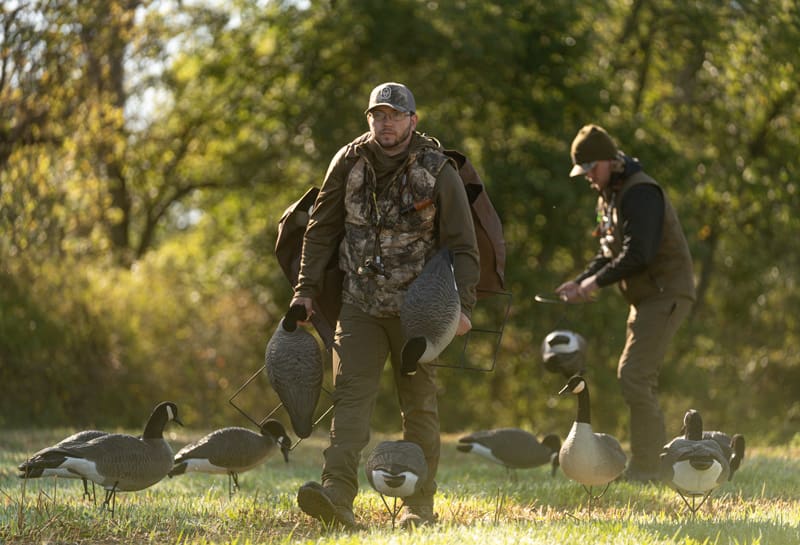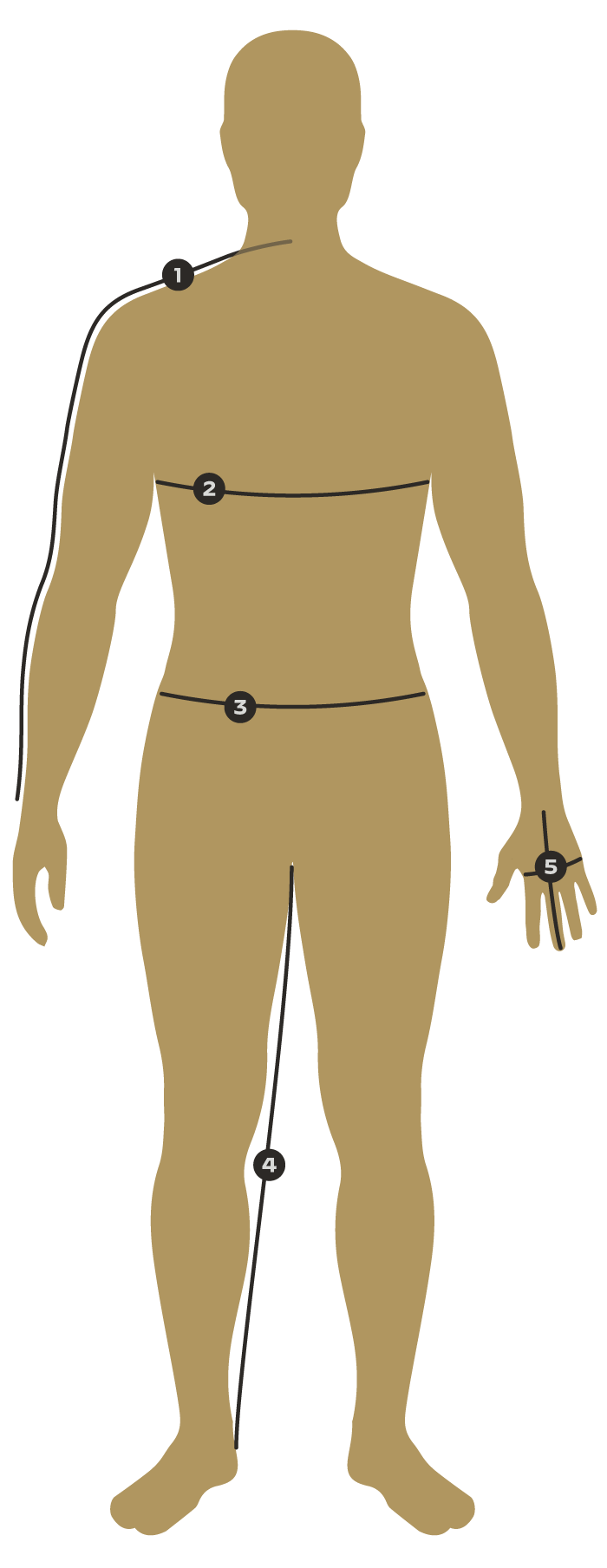The history of the Canada goose is one of the greatest success stories in conservation history. In the 1950s, the subspecies of giant Canada geese was thought to be extinct before a small remnant population was discovered near Rochester, Minnesota, by researchers in 1962. From there, the geese have flourished to the point where they’ve become a nuisance in nearly every city park and urban environment.
All of the seven subspecies of Canada geese are doing well, which means increased opportunities for waterfowlers. According to Ducks Unlimited, “Current estimates indicate there are approximately 3.6 million resident Canada geese in North America. 1.1 million in the Atlantic Flyway; 1.3 million in the Mississippi Flyway; 1.1 million in the Central Flyway; and 0.1 million in the Pacific Flyway. While most North American Canada goose populations are stable or slightly increasing, resident populations have increased dramatically, and they now outnumber or rival migrant populations in each of the flyways. Biologists believe there are currently more Canada geese in North America than at any other time in history, largely due to increasing resident populations.” This equates to expanding opportunities for waterfowlers.
Opportunities to hunt resident Canada geese begin in September and extend into February. How you hunt them changes during the season. Waterfowlers eagerly await September 1 and the start of the early goose season. The season targets resident Canada geese that have become problematic in many locations. The geese are highly successful at raising a brood while using suburbia as nesting grounds. The conflict with geese and users prompted wildlife managers to create a special season decades ago to target the nuisance geese. Waterfowlers have come to view the early season as THE season in many parts of the country.
Resident Canada geese make themselves at home on golf courses, parks, soccer fields, community, and corporate ponds and can create a mess. You walk carefully and gingerly at your own risk when geese are around. Defensive adults can be aggressive and take it out on dogs and others who get too close to their broods. Waterfowlers are more than happy to help control their burgeoning numbers.
Citified geese are content to graze on grass during the summer months or grub for aquatic vegetation in local ponds and lakes. Farmers begin harvesting wheat crops and cutting corn for silage in late summer. The newfound buffet is a huge draw.
Geese begin using fields heavily just before the early season opens and change feeding locations regularly as more and more fields are cut, which makes scouting paramount. You must scout religiously right up to the evening before the hunt to get the latest fix on goose activity and pray they show up the following day. Usually, geese take their time about heading to the fields, and it’s often mid-morning before they arrive, so be patient.
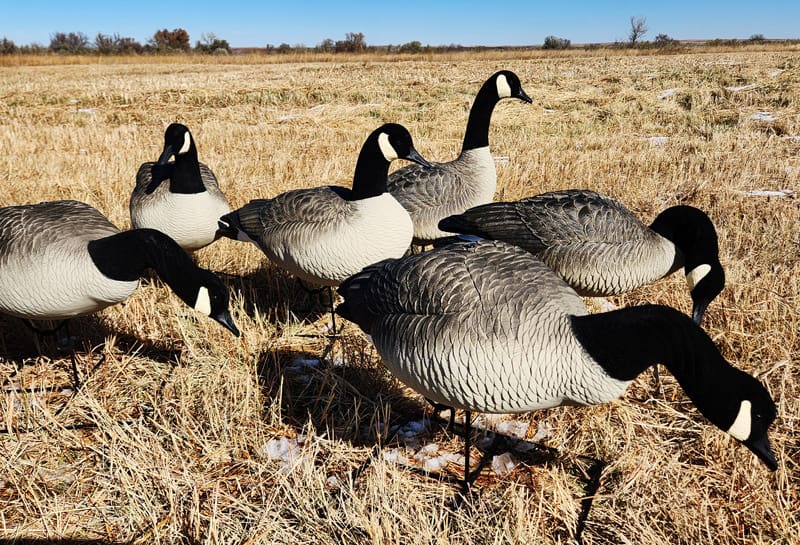
You don’t need a monstrous spread to hunt early-season geese successfully. But since you’re using fewer decoys, you might as well use your best. Full-body Canada decoys, like Hardcore’s Rugged Full-Body Canada Goose Touchdown Decoys, incorporate true-to-life paint schemes, superior feather detail, and flocked heads. Flocked heads stand out. You don’t need a bunch of decoys to hunt early-season Canada geese successfully, so use the best decoys you can get. Spreads that utilize a few sentries and more feeders play right into early-season decoy strategies. Hardcore’s Touchdown Pack features just the right mix of postures for your core spread. Early flocks are family groups of two adults and this year’s brood. 80% of the flock has never been hunted before. It’s the two adults you need to worry about and replicate. When in a field, the yearlings will be actively pigging out while the adults keep watch. Your spread needs to mimic this arrangement. The number of feeders should outnumber the decoys with upright heads three or four to one. Hardcore Rugged Series Full Body Canada Goose Feeder Decoys are perfect for adding to your early-season spread.
Early-season geese segregate into family groups. Set your decoys in pods of six to 10 decoys, with the majority feeders and a couple of upright sentries. Leave plenty of room between groups. The goose and the gander are not very social or fond of other geese.
Early September geese are not overly vocal. Their calling is often animated, defensive, and generated by the matriarchs telling other geese to stay away. After a few days of the season, the adult geese may be eliminated, which leaves the YOY to fend for themselves. The result is a heyday for savvy hunters.
In mid-to-late September, new geese add to the mix. Molt migrants, previous year’s geese that are too young to mate, return from a false migration that takes them north for the summer months before they return in late September and early October. The influx of new birds brings new opportunities.
By mid-October, migratory geese begin filtering down from Canada, and, depending on the weather, the number of geese around peaks in November. Decoy tactics change drastically from the early season then. More geese mean more decoys. Try to match the number of decoys you use to the number of geese you see in the fields. If you have the wherewithal, an enclosed trailer, and the manpower, massive spreads can be the ticket. Putting the decoys in a specific pattern can help funnel geese into shooting range.
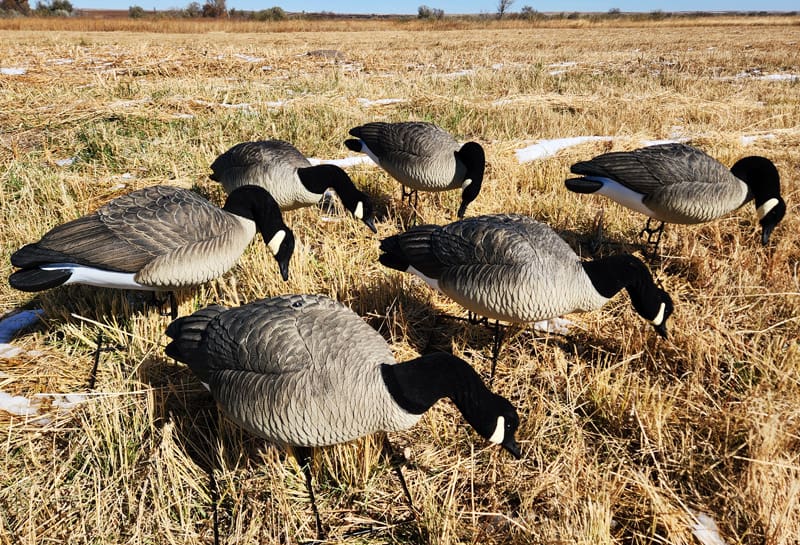
The classic question mark is always a productive pattern. Ensure the wind is at your back at the closed end of the question mark. Pack decoys in the main body of the question mark and trail decoys on a line downwind. The farthest decoys can be out of shooting range because, ideally, the birds work up the line and try to land in the middle of the spread. Place four or five decoys 10 yards from the main body of the spread to simulate birds that have just landed.
A horizontal feed line simulates geese that are actively feeding. Ideally, the feed line is 75 yards long and approximately 30 yards wide. Geese will try and land on the downwind side of the spread. Pack as many decoys as you can in the spread so incoming birds try to land on the downwind side of the spread. Hunters can be clustered in the middle or spaced throughout the spread.
Creating an X with your decoys leaves plenty of room for geese to land well within range, creating inviting landing areas. Hunters can position themselves anywhere in the X and still be within shooting range of the birds. Aggressive flagging can help draw geese to the center of the spread.
The colder it gets, the more you need to cluster your decoys and incorporate more sleeper decoys. Migratory geese head south when cold and snow hits, but resident geese hang around until snow prevents them from accessing food. Resident geese will even migrate back north during winter thaws if the weather permits. Seasons in many states extend into February.
Resident geese are seasoned veterans and spreads must be perfect to successfully draw them into shooting range. Snow can be a godsend for hiding from the sharp eyes of wary geese. Big spreads are usually the rule when hunting late-season geese. Try to emulate the number of geese you’re seeing in the field. Geese feed in tight clusters when it’s cold, so your decoys should imitate this tendency. Sleeper decoys should become a bigger and bigger part of your spread the colder it gets. Geese will plop down when they get to the field, nap, and melt the ground underneath them to get at the waste grain.
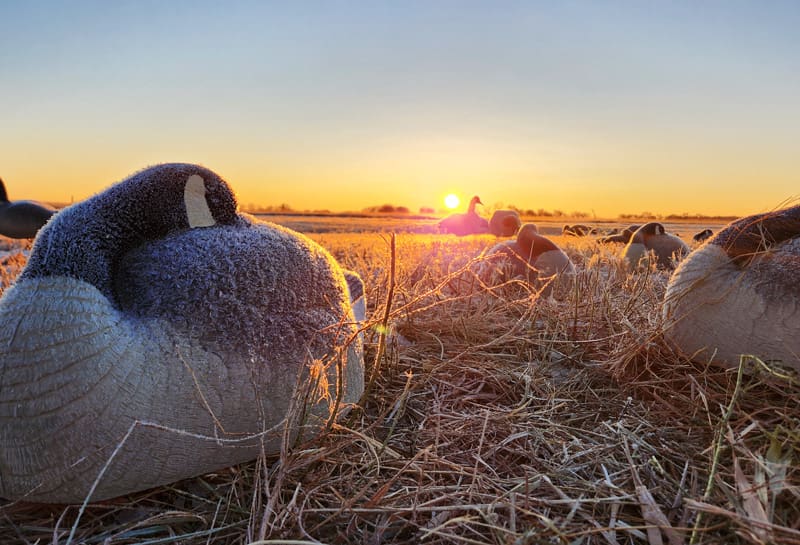
Sleeper shells, like Hardcore’s Rugged Series Canada Sleeper Shell Decoys, are ideal for mimicking the relaxed posture of sleeping Canadas. The decoys are incredibly lifelike with their flocked heads, highly portable, and easy to deploy with gloves on. Cluster your sleeper decoys in groups of four to six decoys towards the upwind side of the spread facing into the wind. Sleeper decoys are outstanding confidence decoys. Sleeping geese are contented geese.
Avid waterfowlers are taking advantage of the burgeoning number of Canadian geese these days. The heyday of Canada goose hunting is now!
